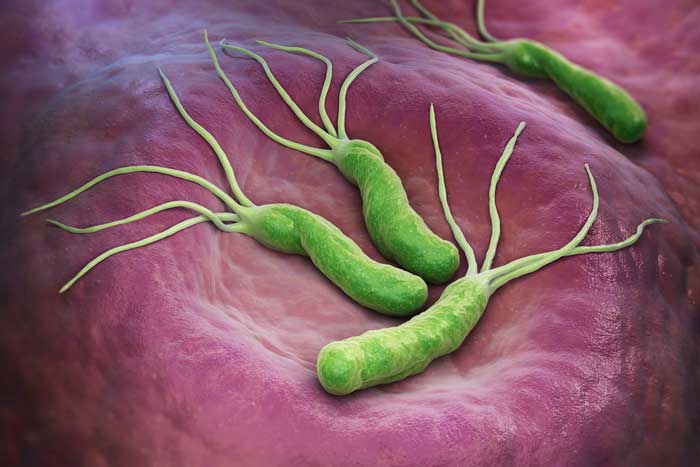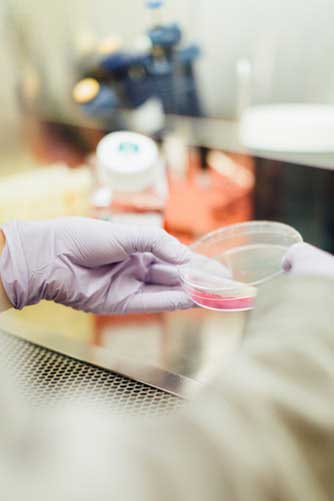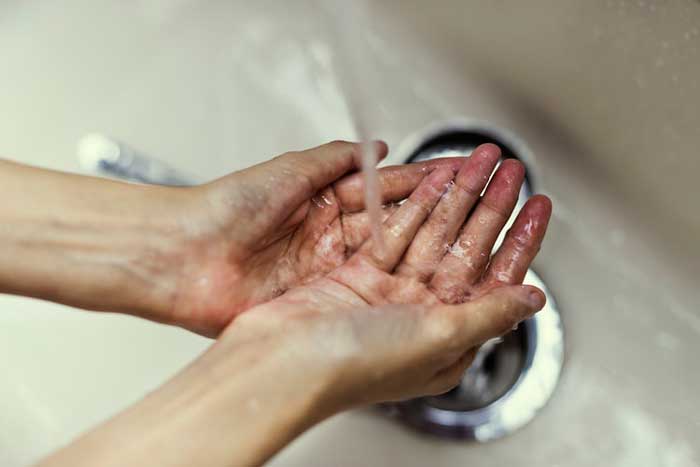 Helicobacter pylori is a bacterium that can cause gastritis and stomach ulcers. WHO considers this microorganism a dangerous carcinogen, recognizing its connection with stomach cancer.
Helicobacter pylori is a bacterium that can cause gastritis and stomach ulcers. WHO considers this microorganism a dangerous carcinogen, recognizing its connection with stomach cancer.
How does Helicobacter pylori survive in the gastric juice?
It was believed that stomach ulcers develop from spicy food. Nobody thought some microorganism able to survive in hydrochloric acid. But in the 1980s, Australian physiologists, who studied pieces of the stomach wall obtained from a biopsy in patients with ulcers, found living bacteria there and named them Helicobacter pylori. These bacteria can be detected only under a thick protective layer of mucus, which covers the inner surface of the stomach. But how do they get there and why don’t they die when they get into gastric juice? Due to their flagella, the bacteria move deftly and quickly in gastric juice, constantly infesting new areas.
In order to survive in an aggressive environment, Helicobacter pylori synthesize urease, a special enzyme that breaks down urea to ammonia and forms a protective alkaline cocoon around the bacterium.
It is thanks to this cocoon that it is detected – even without gastroscopy and biopsy. There is a respiratory urease test: you drink the solution of carbamide (urea), exhale into special containers twice – and the composition of the air (before the intake of carbamide and after it) determines the presence or absence of Helicobacter pylori in the body. This test can be used both for the diagnosis of infection and for evaluating the effectiveness of treatment.
How is Helicobacter pylori diagnosed?
Today, it is the respiratory test that is most popular because it is absolutely painless and provides high diagnostic reliability and a quick result.
However, there is bad news: few people succeed in diagnosing stomach diseases without gastroscopy. In addition to the respiratory urease test, there are blood tests for specific antibodies, but they can be false-negative for a recent infection or remain positive after successful treatment for a long time. To detect this bacterium, a test for the presence of Helicobacter pylori antigen in the stool can be successfully used. If the test is negative, and the stomach does not hurt, you can calm down for a while. However, if the listed non-invasive methods have confirmed the presence of a bacterium, then it is necessary to undergo gastroscopy.
Gastroscopy is mandatory for suspected gastric cancer – during the procedure, a biopsy is performed followed by histology to confirm or deny the diagnosis.
Diet in case of the disease
Getting rid of Helicobacter is one of the recognized measures to prevent stomach cancer. Treatment in each case is selected by the gastroenterologist. As a rule, antibiotic therapy is prescribed. In addition, the patient should stick to a sparing diet. There is no special diet to combat Helicobacter pylori, but one should adhere to the diet recommended for patients with gastritis and peptic ulcer during treatment.
Distribution of Helicobacter
Helicobacter pylori inhabit the digestive tract in almost every second human on Earth, but in most cases, this bacterium is not found. It is believed that Helicobacter pylori appear in children at an early age. It can be transferred with kisses, the use of common dishes, non-observance of the rules of personal hygiene, etc.
Symptoms of the disease
As practice shows, not all family members can be infected at the same time. An infected person can live a life without complaining about stomach problems. Getting infected for the first time, someone might experience sharp pain in the top half of the stomach, disturbed defecation, a rise in temperature, eructation or nausea. In some cases, the symptoms of gastric diseases are manifested only when the immune system is activated – for example, after experiencing stress or a strong nervous shock.
How can one get infected with Helicobacter?
The stories about getting infected in a restaurant have the right to exist, but they are unlikely: the bacteria die very quickly in the air and especially in a dishwasher. Of course, this option is possible: for example, in a restaurant, a waiter grabs your order with unwashed hands, just coming out of the toilet. But the probability of getting infected from your companion is much higher – when you kiss him or eat a cake from the same spoon…








